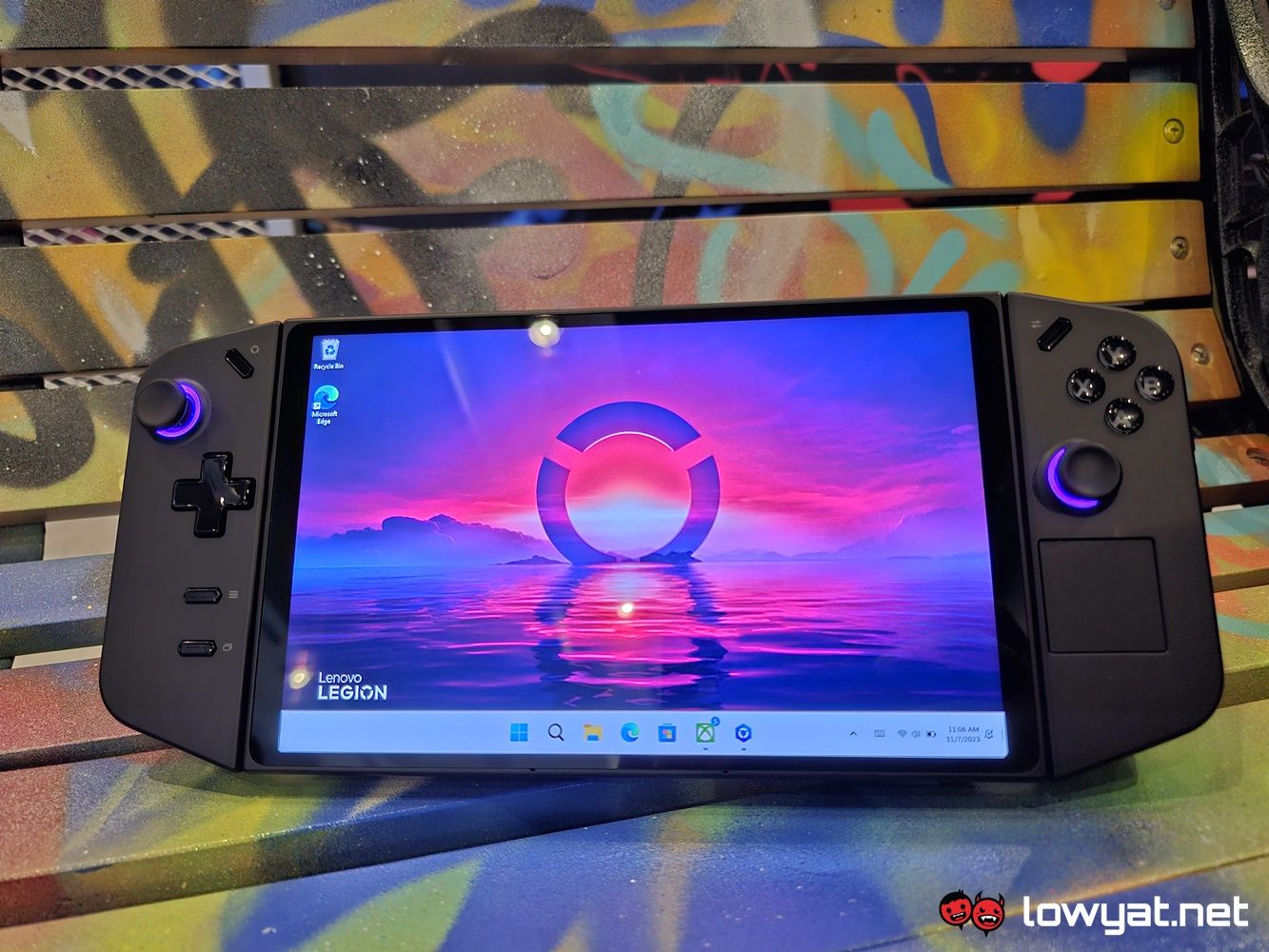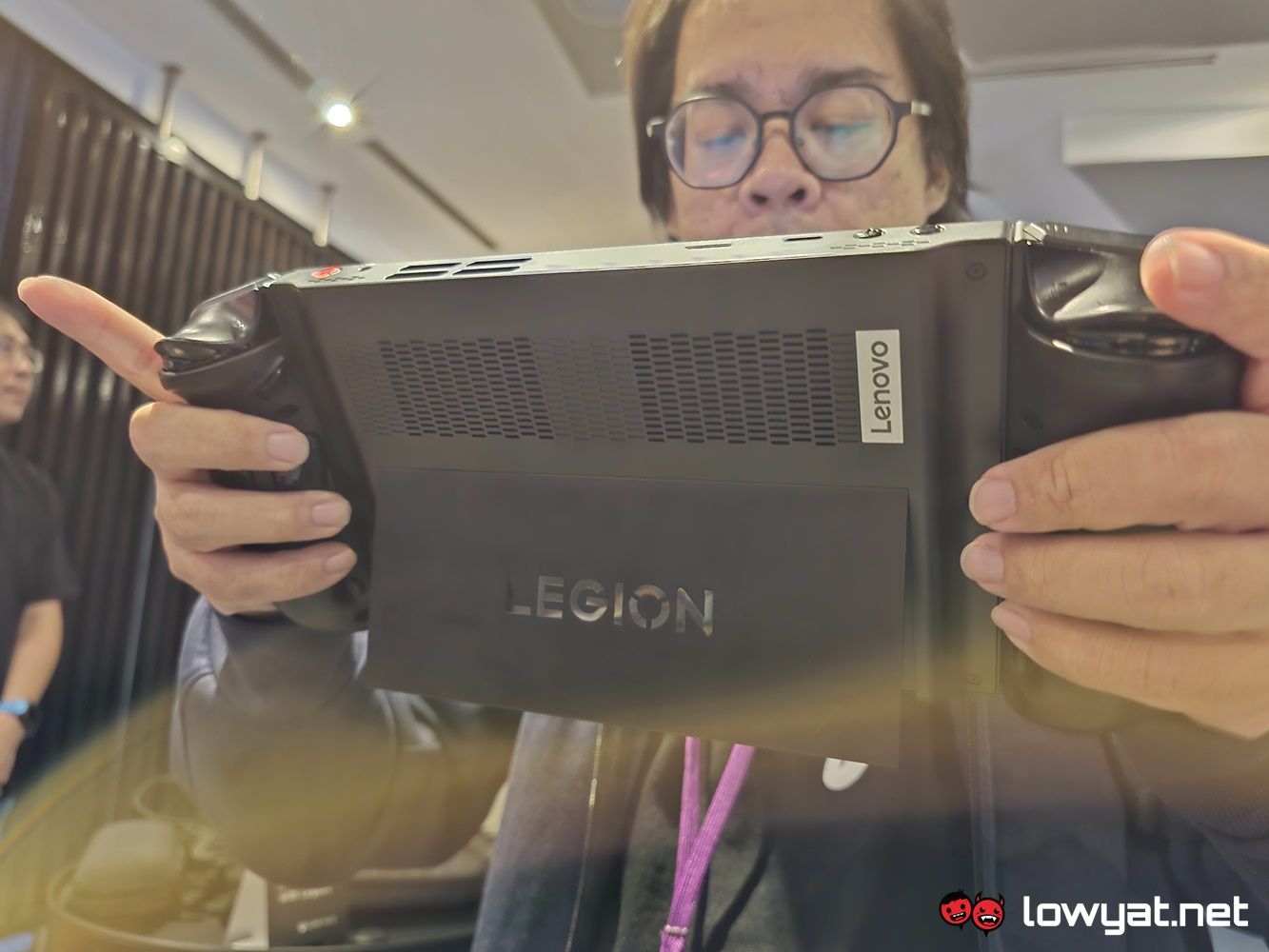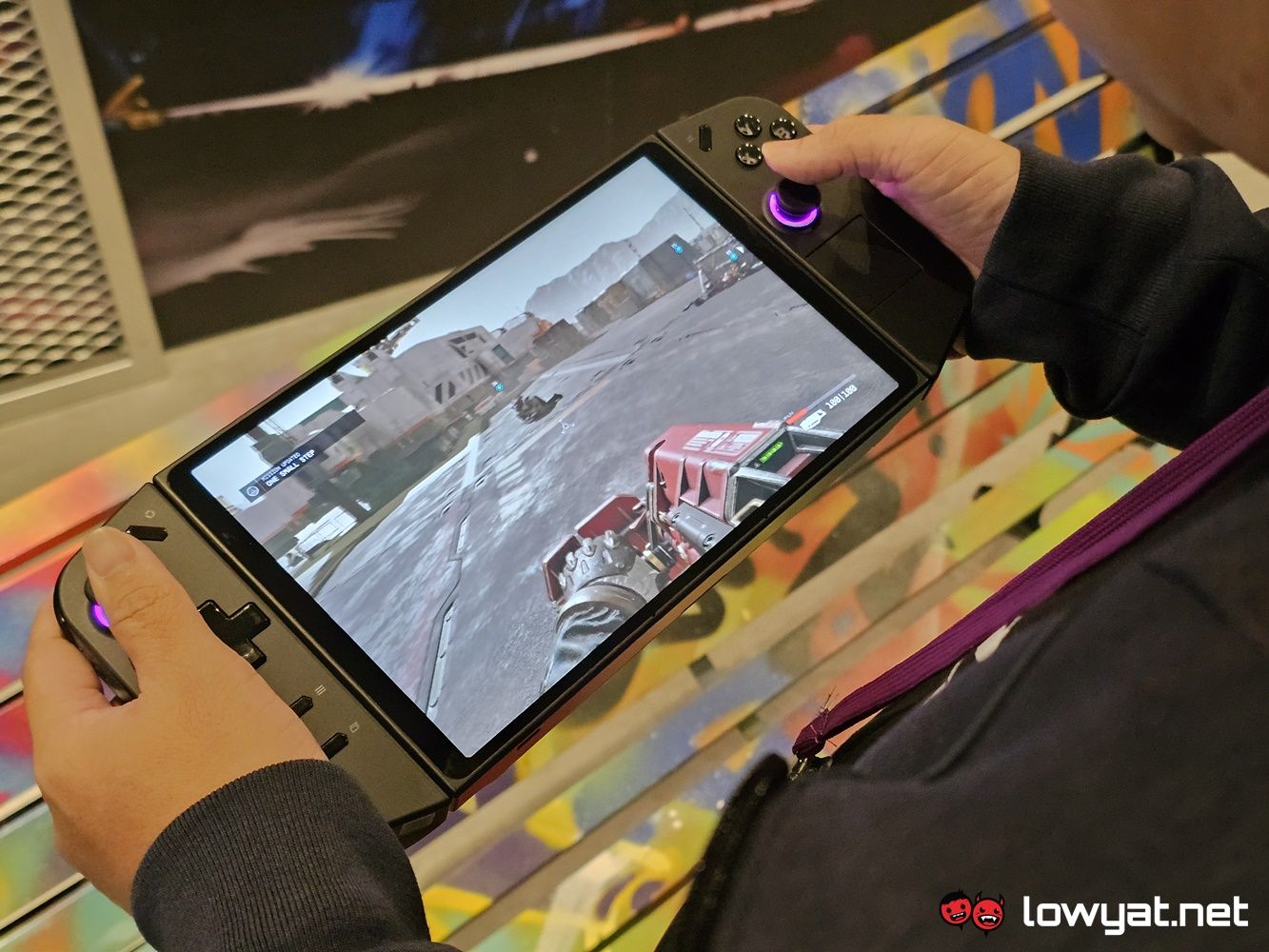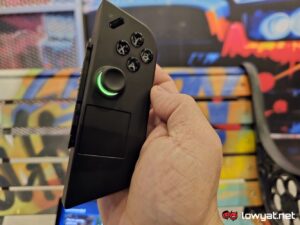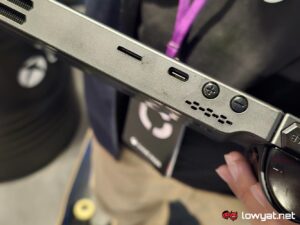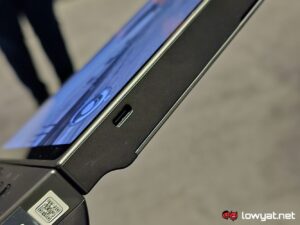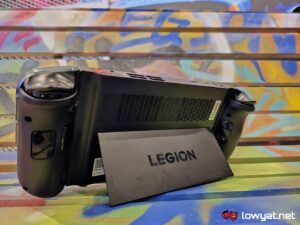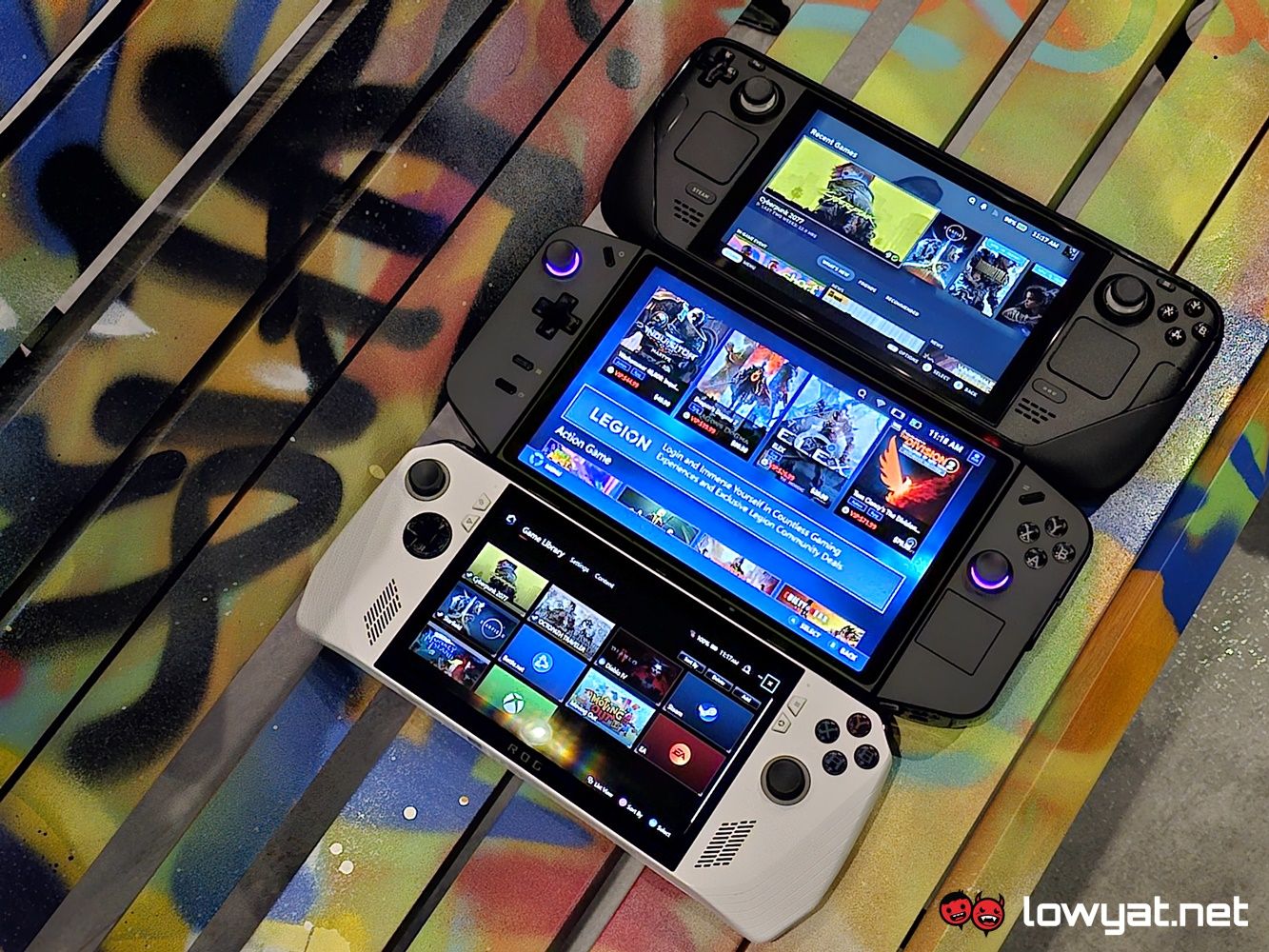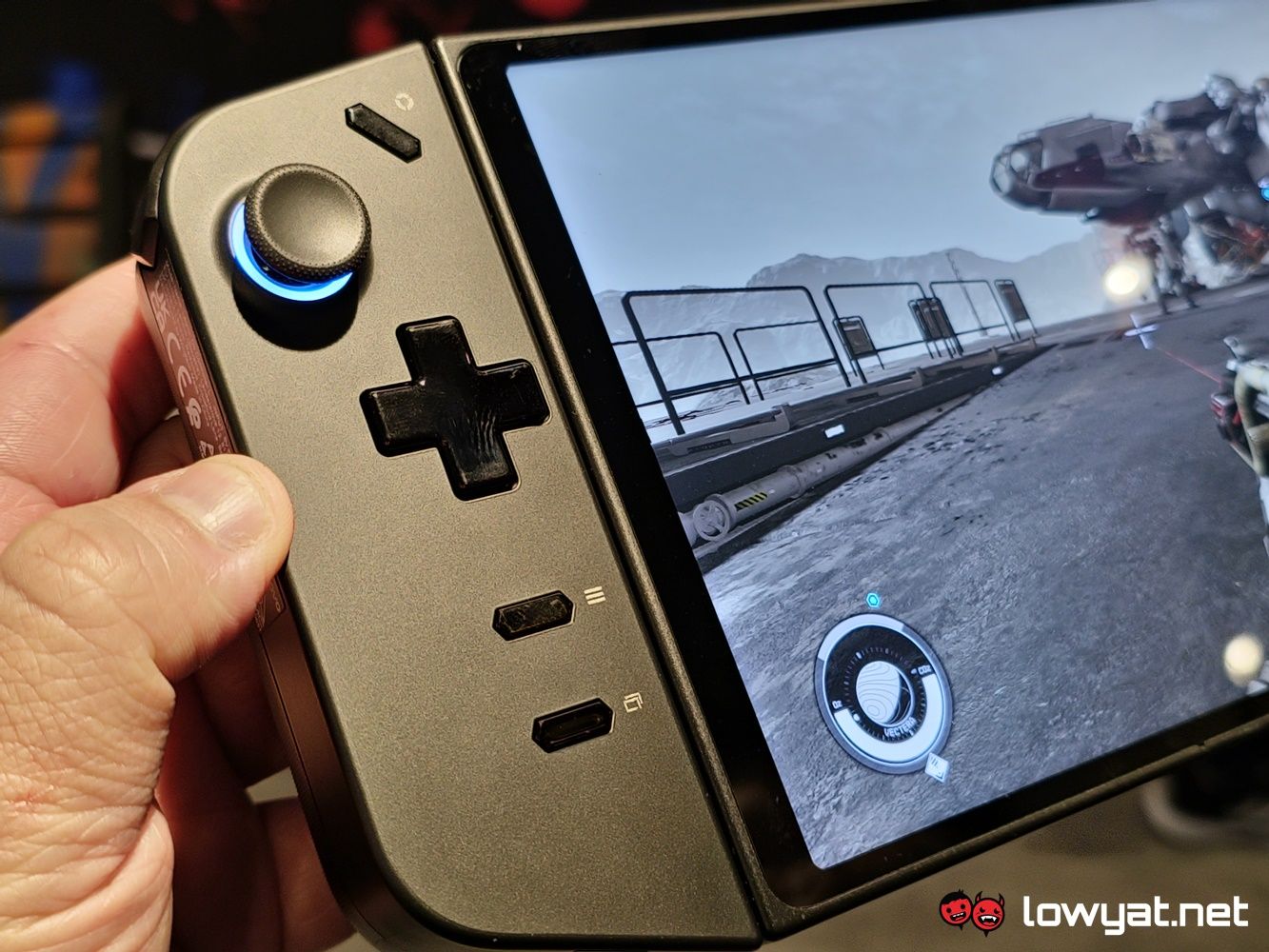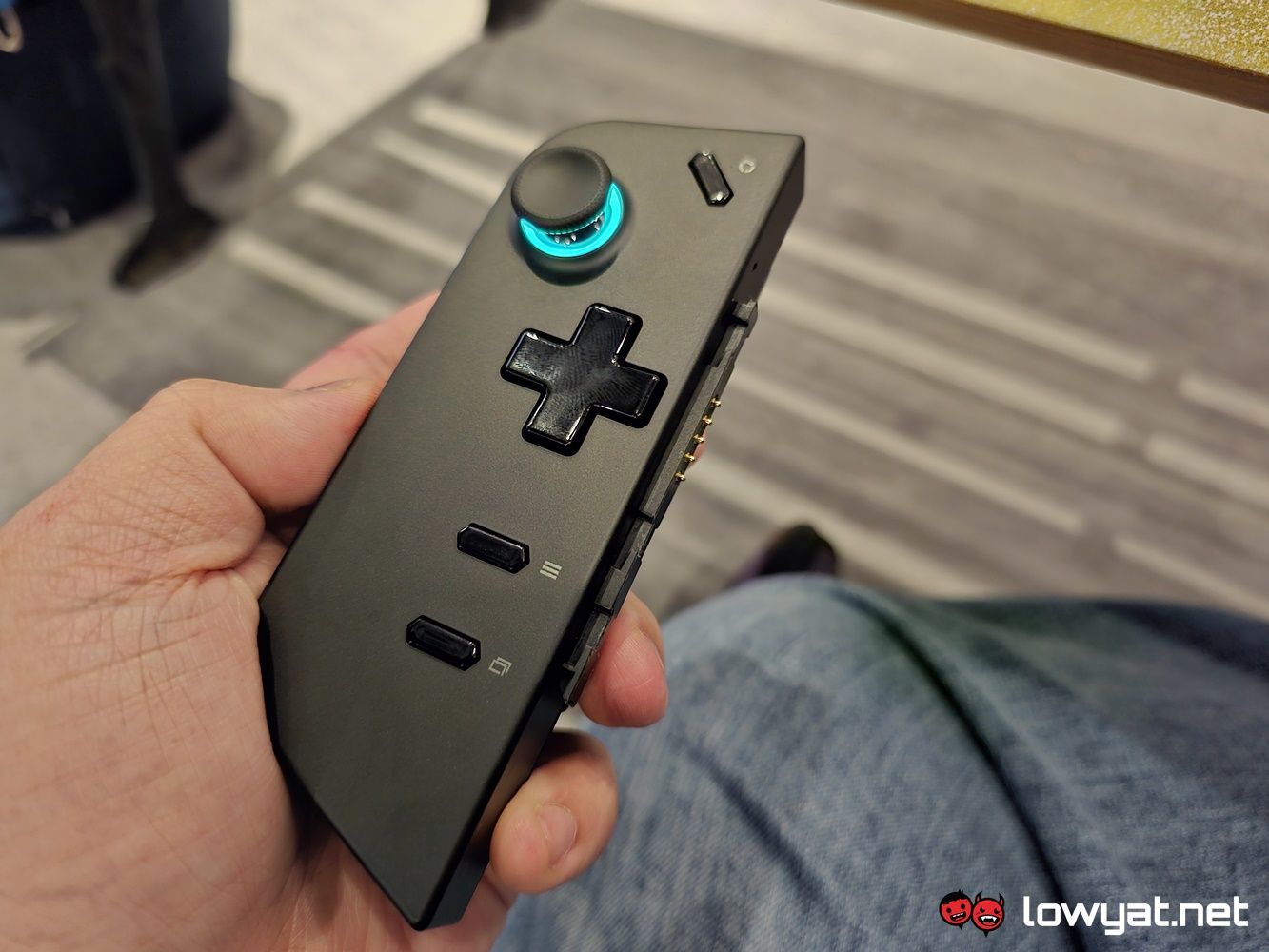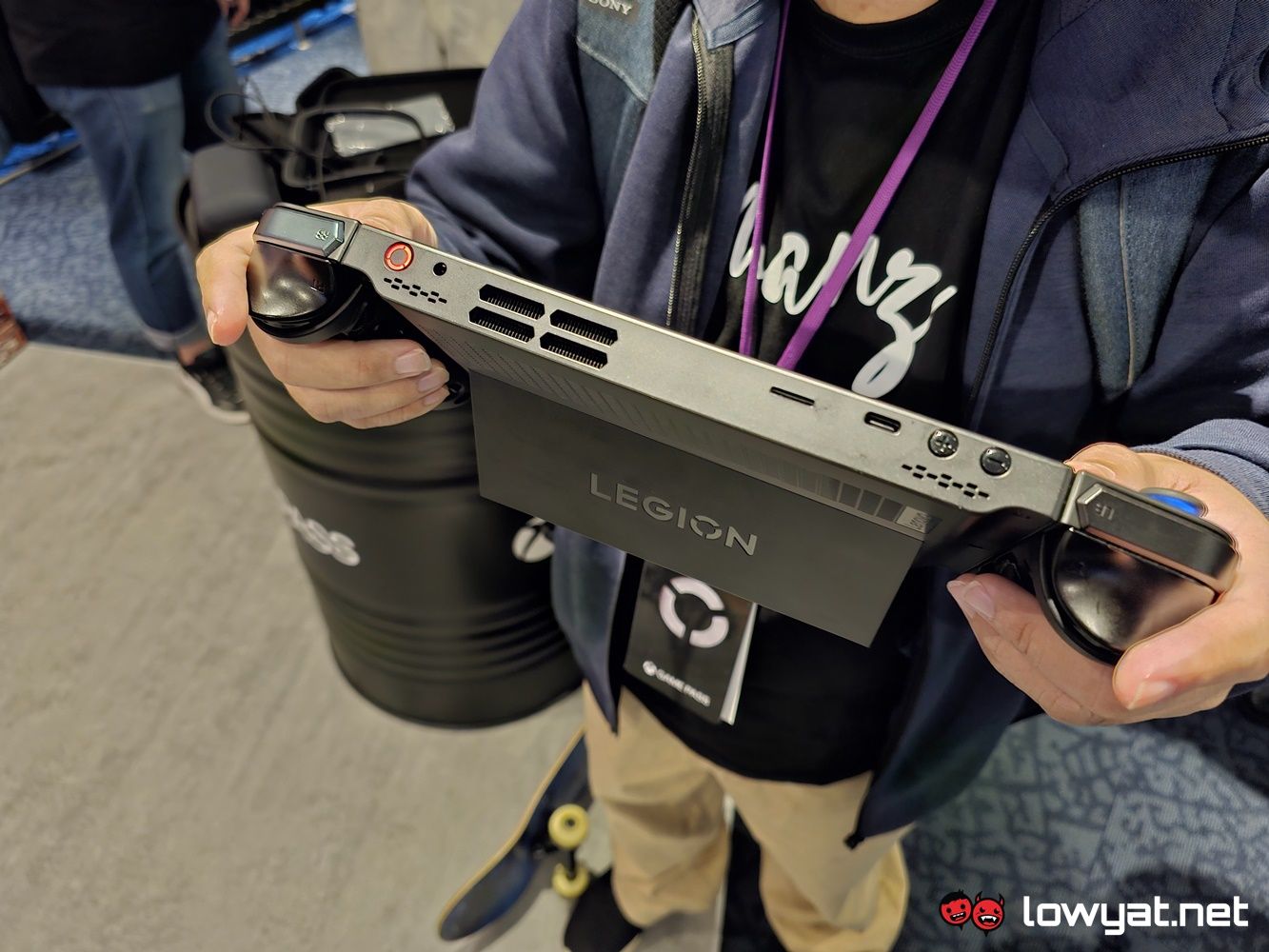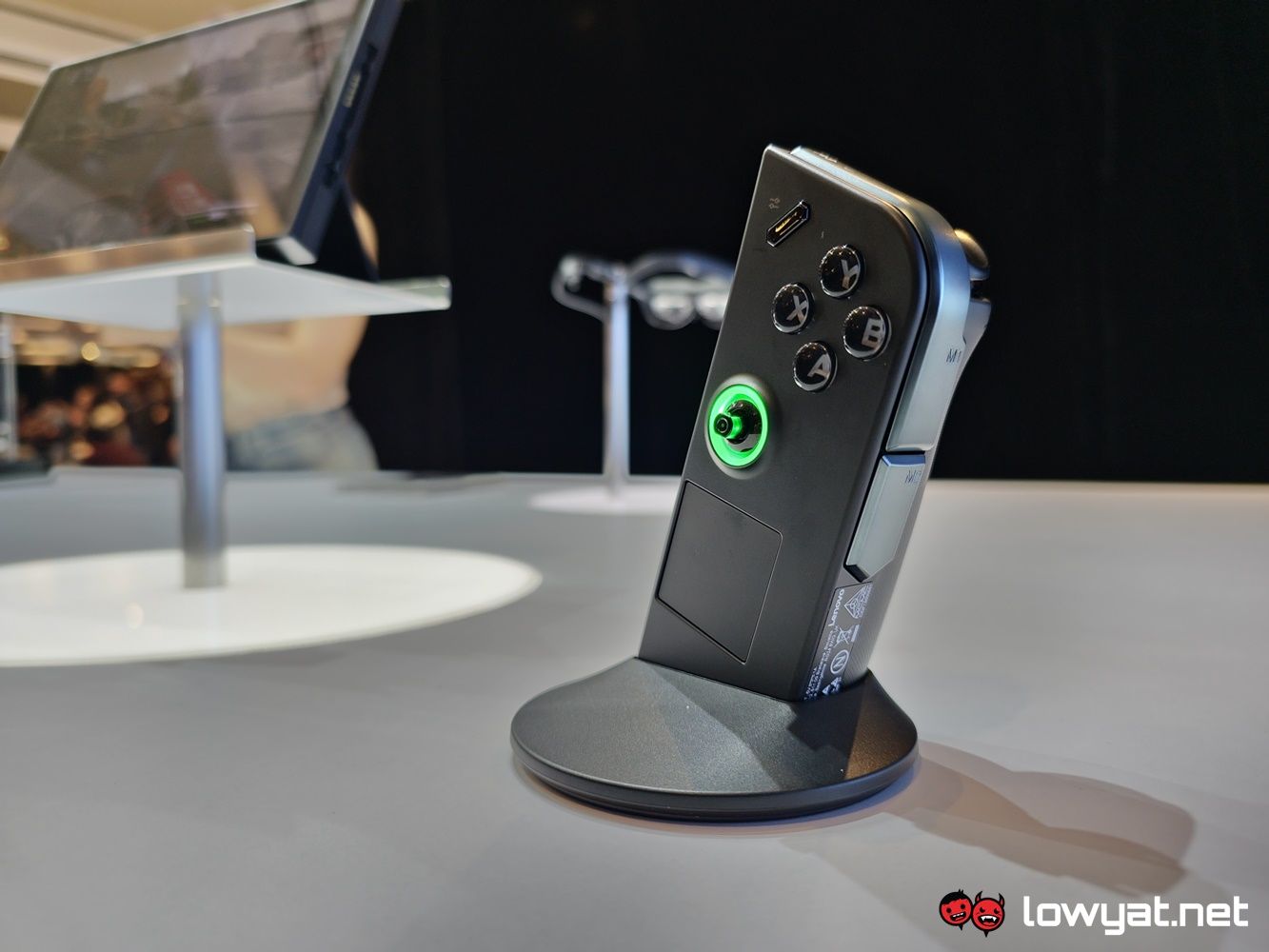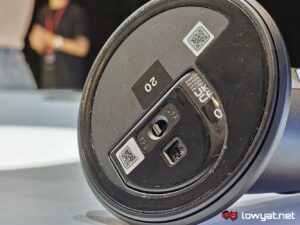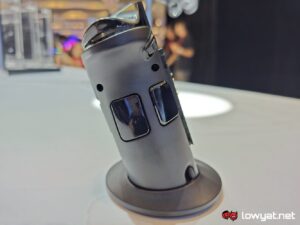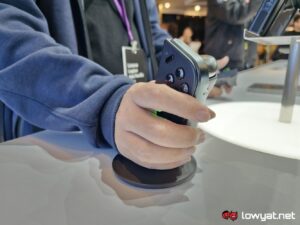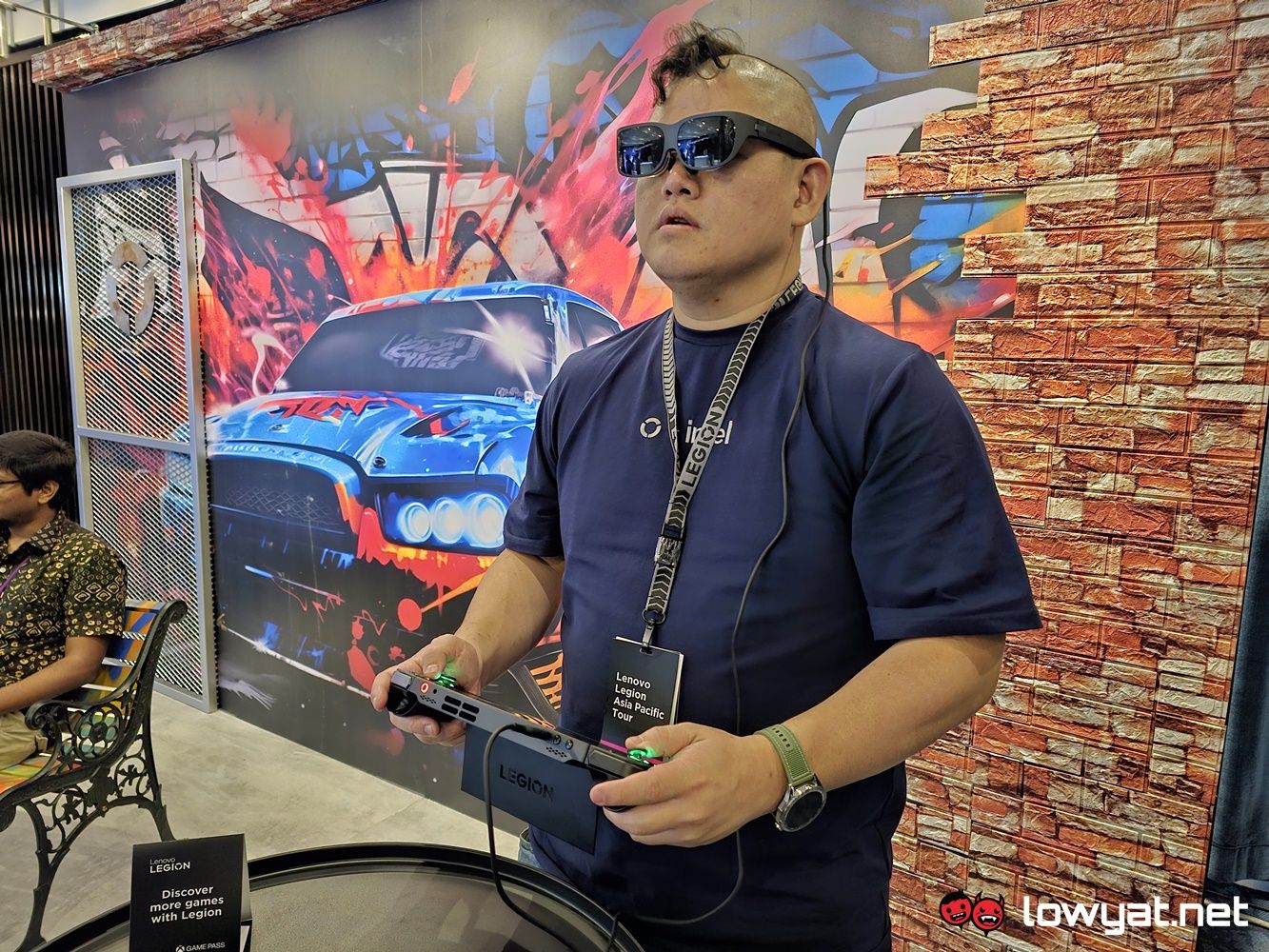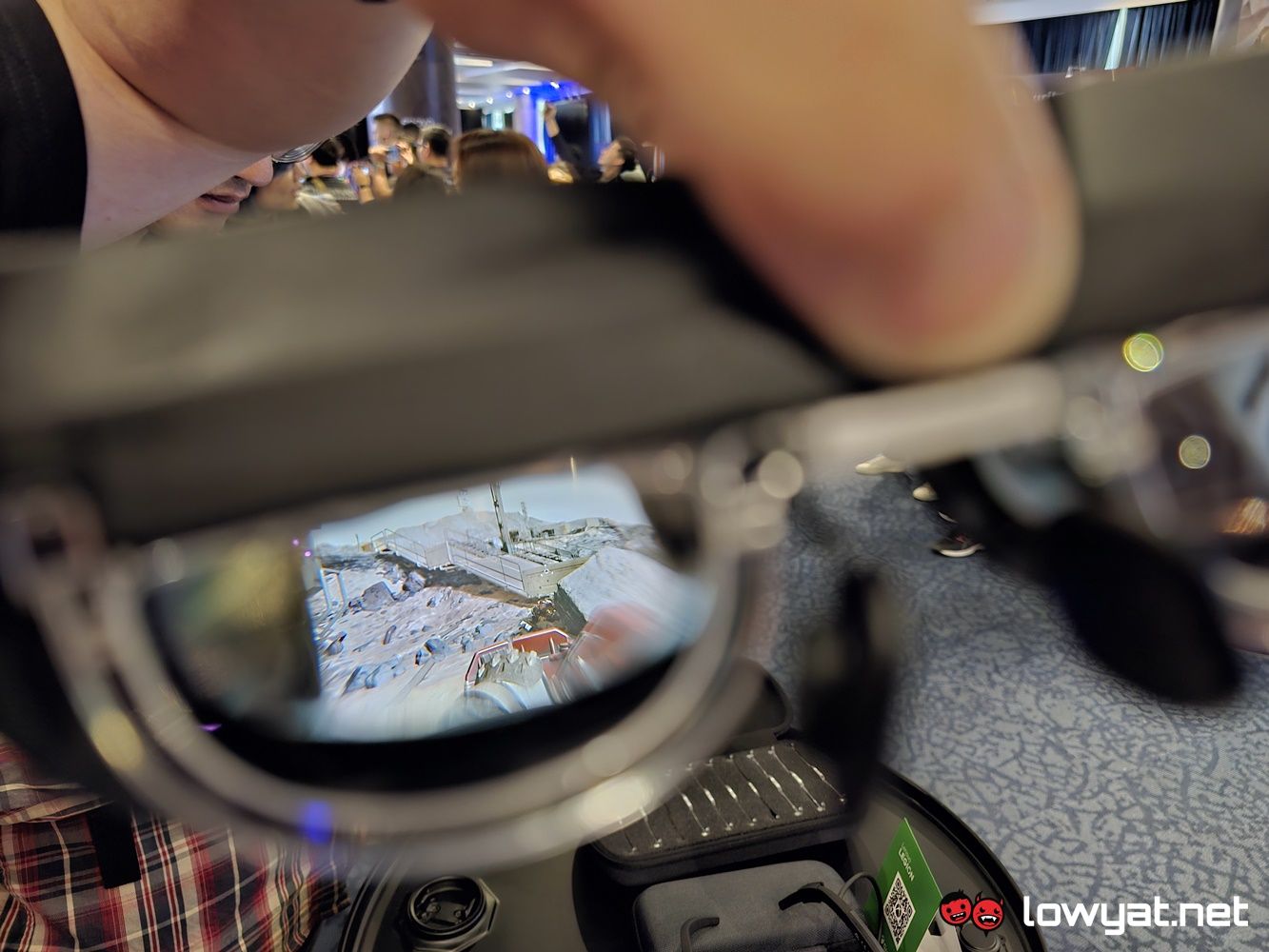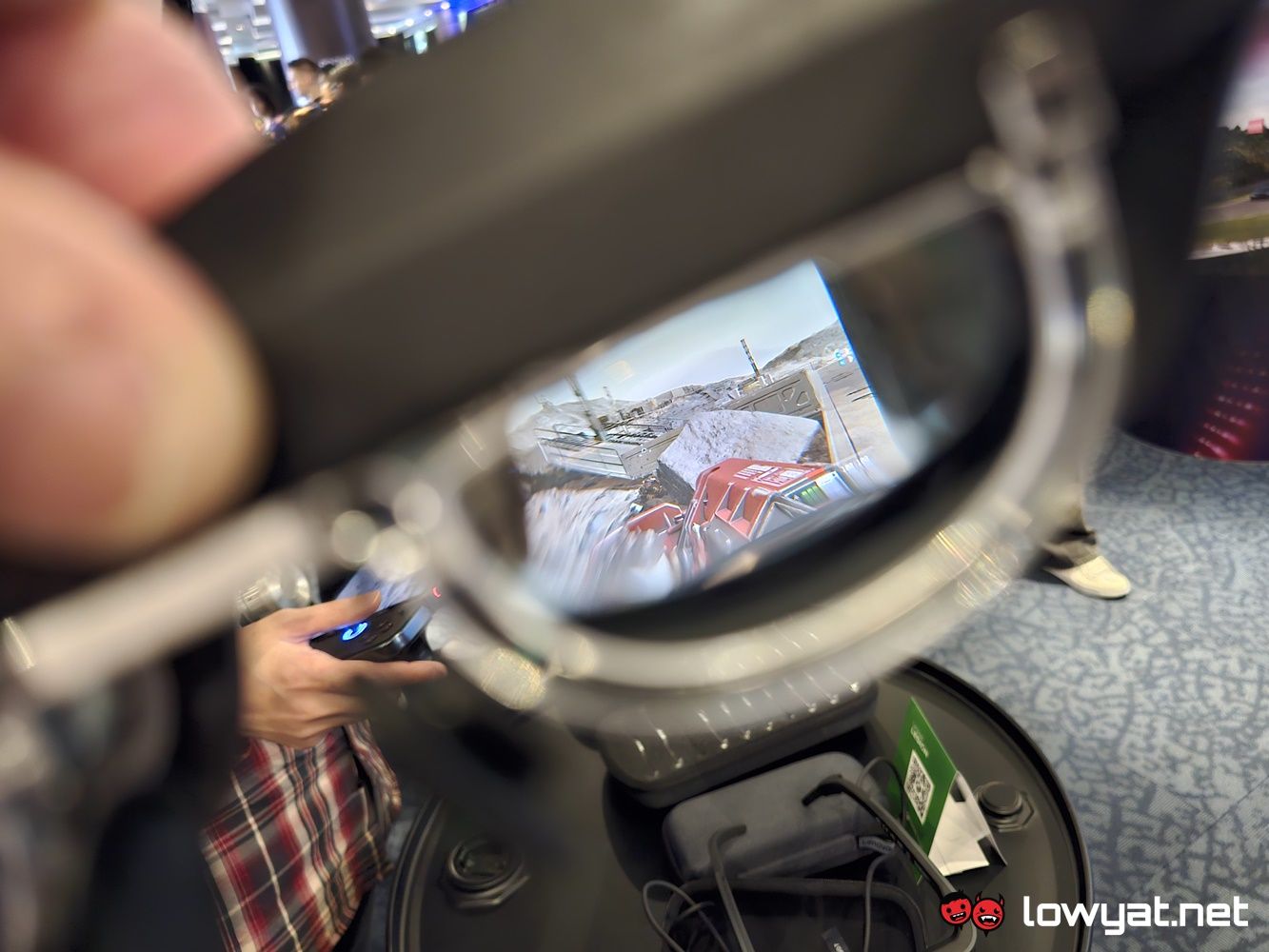Earlier today. Lenovo gave us the chance to hold and fondle its very own PC handheld gaming console, the self-named Lenovo Legion Go. It’s pretty clear that with this Windows-powered console, the brand is taking on the likes of the Valve Steam Deck and ASUS’ ROG Ally, and then some.
Some Bits From Nintendo, Some From ASUS…
You’ve probably already gotten a look at the Legion Go via the many video posted by YouTubers who were fortunate to get a hold of the console prior to this launch. In which case, you can obviously see how Lenovo borrowed a variety of design elements, in order to make its console. Both the full-body kickstand and detachable controllers, in this case, are designs clearly taken from the Switch OLED.
Then there is the heart of the Legion Go, the engine that drives its, so to speak: the AMD Ryzen Z1 Extreme. To be fair, this chip debuted with the ASUS ROG Ally, which was technically created as part of a dare from the brand to AMD. To be even more precise, the processor itself is technically based off of the chipmaker’s Ryzen 7840U APU and the integrated Radeon 780M graphics. But I’m not here to argue semantics.
Then there is the 8.8-inch QHD display and its 144Hz panel, which again, I think is overkill. With the Ally, it was made abundantly clear that Full HD (1,920 x 1,080) was more or the ceiling limit warranted by the Z1 Extreme. Heck, for that matter, that the console’s 120Hz panel was basically overkill, given that I capped the framerate to just 45 fps, in a hopeless effort to conserve battery life.
That brings me to a point that I believe warrants repeated mention: Are you going to be playing more games at 1440p on the Legion Go? Of course not. Are the majority of your games even going to be able to break past the 144 fps mark? Highly unlikely. But does it look good on the console’s 8.8-inch display? Absolutely.
Of Detachable Controllers And Giving It The Beans
Because the controllers of the Legion Go are detachable, a lot of the console’s weight is very clearly centre focused. That, in turn, may lead you to believe that the controllers themselves feel hollow and structurally unsound. But no, not quite the case.
Lenovo has clearly spent good time, whiling away the hours to ensure that the controller wouldn’t crumble with the just the slightest exertion of gripping force. It’s made of a special, hard plastic, while the triggers on each controller look glossy and feel plastic. The shoulder buttons, however, feel a little more solid, with a shallow key travel to them.
Of course, some of you may know that the right controller of the Legion Go is a little different, unique even, in its design, due to its second use case: transforming into a mouse cum joystick, which Lenovo calls FPS mode. More on that in the next section.
On another related note, the analog sticks on the controllers are hall-effect joysticks, which translate into tighter dead zones and more importantly, no more stick drift. On that note, the top of the analog sticks are detachable, a function that may or may not be critically important for the right joystick, especially in FPS mode.
As for the rest of the buttons, the D-Pad is clicky and, if I’m being really critical, sounds a bit hollow. There are also the rest of the function buttons on the Legion Go: the Legion button, Start, and even the Menu button feel the same – hollow clicks that sometimes require more than one press to bring up what I’m looking for in the first place.
Moving on, the power button on the console is unique too, informing you of the current power state of the Legion Go – Blue means it is in the power-saving Silent mode, White tells you that it is in the Auto state, and Red means that it is in Turbo mode.
The ABXY buttons of the Legion Go feel similar to that of Valve’s Steam Deck. Again, they’re plasticky, and have a comfortable level of depression. At this point, I should note that many of the units out on display today were engineering samples, and Lenovo had informed us beforehand that some functions may not necessarily work on the first try.
As far as the performance of the Legion Go goes, one of the handful of games Lenovo had installed on the console was Starfield. While it is a recent game, it is, sadly, not what I would describe as an optimised titles, especially when it comes to adjusting the in-game resolution. As such, I was forced to field test the console by running the game at its default QHD resolution. With that, the console ran with between 20 and 30 fps, which isn’t great but not terrible either.
Unfortunately, given the number of people that were present at the launch event, I wasn’t able to spend a long enough period with the Legion Go to gauge the battery life. In the time I did have access to the handheld and by my rough estimate, the 49.2WHr battery inside seemed like it would only last approximately two hours tops.
Sadly, Lenovo didn’t allow me to pry the back open but fret not: I will crack open this handheld machine once the brand sends in a review unit for us.
FPS Mode: Quirky But Not Always Effective
Lenovo’s FPS Mode for the Legion Go, at this current moment, feels more like a gimmick than a proper accessory. Yes, it is a very interesting concept and yes, it actually does feel like a mouse, albeit vertical, but it means that I can shoot or move the targeting reticule more accurately in-game.
The problem here, though, is that FPS Mode may not necessarily play nice with certain game. Case in point, Starfield.
When activated, the Legion Go’s FPS Mode automatically transforms the button assignment into a hot mess. This is due to the fact that it takes away the ABXY buttons from the formula, and even worse, a few of the buttons aren’t even functional.
Like I said, this is clearly different for each game but as it stands, it seems that this issue may become a point of contention with consumers, especially those that hot and heavy into FPS games. To that end, Lenovo did assure us that it was aware of the issue and that it was addressing the issues and would work towards fixing the issue.
Extra Added Bonus: The Legion Glasses
Besides the Legion Go, the Legion Glasses was the one accessory I wasn’t expecting to be so gob smacked and enamoured with. Basically, they’re a pair of glasses with a display built right into it, and operates via the use of a single USB-C cable.
I’m sure you’ve gotten the general idea by now: plug the Legion Glasses into one of the ports of the Legion Go, and the display on the main console shuts off and outputs directly to those inside the glasses. Let me be clear: the technology in here isn’t 3D, and is a single screen that is projected directly into your eyes.
In my brief time with the Legion Glasses, the display effectively follows the movement of my head, so if I’m tilting it at the side, the display tilts as well. As for the clarity, the side at the top of the display looked a bit blurry but for the bottom and middle of the screen were sharp.
The best part about it the Legion Glasses? It actually works with any console, and not just the Legion Go. Seriously, I connected it to my Steam Deck and the accessory switched to the external display, just like that.
Follow us on Instagram, Facebook, Twitter or Telegram for more updates and breaking news.


